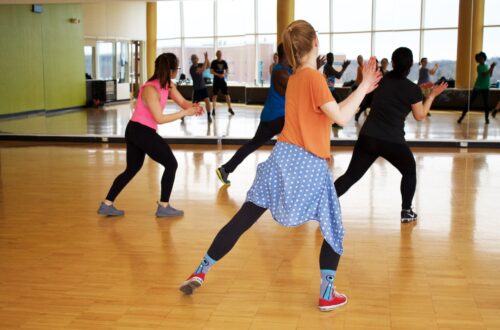
Running vs. Jogging: Which Is Better for Your Fitness Goals?
When it comes to improving our fitness and overall health, exercise is a key factor. Running and jogging are two popular aerobic activities often confused with each other, but they have distinct characteristics and unique benefits.
Understanding the differences between these two forms of exercise and how they align with your fitness goals can help you make an informed decision for a more effective workout routine.
In this blog, we will explore the distinctions between running and jogging and determine which one best suits your fitness aspirations.
The Distinction Between Running and Jogging:
Running and jogging both involve moving at a pace faster than walking, but their speed and intensity levels set them apart. Running typically involves a swifter pace and demands more effort, while jogging is a more relaxed and moderate form of exercise.
Additionally, running tends to have a higher impact on the body and joints compared to the gentler nature of jogging. Let’s break down the differences and benefits of each:
Running
Running is a higher-intensity exercise than jogging. It involves a faster pace and typically requires more effort and energy. Running can be a great option if your fitness goals include:
Advantages of Running:
A. Improved Cardiovascular Endurance:
Running is a powerful cardiovascular exercise that challenges your heart and lungs. Engaging in regular running sessions helps improve your cardiovascular endurance, enhancing your overall stamina and allowing you to engage in longer and more intense workouts.
B. Increased Calorie Burn and Weight Management:
For individuals looking to shed extra pounds, running proves to be a highly effective option. Its higher intensity results in a greater calorie burn per minute, making it beneficial for weight loss and weight management.
C. Strengthening Leg Muscles and Enhancing Muscle Tone
The higher impact of running engages various muscle groups, particularly those in the legs. Over time, this can lead to improved muscle tone and increased leg strength, enhancing your athletic performance.
D. Positive Impact on Bone Density
The impact experienced during running stimulates bone growth and density, promoting better bone health and reducing the risk of osteoporosis.
E. Release of Endorphins for Mental Well-being
Running triggers the release of endorphins, neurotransmitters that act as natural painkillers and mood boosters. These “feel-good” chemicals reduce stress, anxiety, and depression, promoting better mental well-being.
F. Time Efficiency and Covering Greater Distances
Running allows you to cover more ground in a shorter amount of time due to its faster pace. This time efficiency is advantageous for individuals with busy schedules seeking effective workouts.
Considerations for Running:
A. Potential Stress on Joints and Injury Risk
The higher impact of running can put stress on the joints, increasing the risk of overuse injuries such as shin splints, a runner’s knee, or stress fractures. Proper warm-up exercises and wearing appropriate footwear are crucial to mitigating these risks.
B. Gradual Progression for Beginners
For beginners, diving straight into a full-fledged running routine may be too demanding and could lead to burnout or injuries. Starting with a jogging routine and gradually increasing intensity allows beginners to build stamina and prevent overexertion.
C. Proper Warm-up and Footwear
Warming up before running is essential to reduce the risk of injury. Additionally, wearing supportive and well-fitted running shoes provides the necessary protection and cushioning for your feet and joints.
Jogging
Jogging is a form of running but at a slower and more comfortable pace. It is considered a moderate-intensity exercise. Jogging can be a suitable option if your fitness goals include:
Advantages of Jogging:
A. Low-Impact Exercise for Joint Health
Jogging’s gentle nature makes it an ideal low-impact exercise, reducing stress on the joints. It is a suitable option for individuals with joint issues or those seeking a more joint-friendly workout routine.
B. Suitable for Beginners and a Gradual Approach to Fitness
Jogging serves as an excellent starting point for those new to exercise or returning after a break. Its slower pace allows beginners to ease into fitness routines and gradually build endurance.
C. Stress Relief and Enjoyment in a Comfortable Pace
Jogging at a comfortable pace can provide a sense of relaxation and enjoyment, making it an excellent stress-relieving activity.
D. Sustainable and Long-Term Routine
Due to its lower impact, jogging is a sustainable exercise choice that reduces the risk of overuse injuries. It can be incorporated into long-term fitness plans without causing excessive strain on the body.
Considerations for Jogging:
A. Lower Calorie Burn Compared to Running
While jogging still burns calories and offers cardiovascular benefits, it may not be as effective for weight loss as running due to its lower intensity.
B. Progression to More Intense Exercises
As fitness levels improve, some individuals may desire a more challenging workout. In such cases, transitioning to running or incorporating higher-intensity exercises may be beneficial.
C. Complementing with Strength Training
To achieve a well-rounded fitness routine, jogging can be complemented with strength training exercises. Strength training helps build muscle mass and enhances overall physical performance.
Fitness Goals and Choosing the Right Exercise:
A. Weight Loss and Calorie Management
Individuals primarily focused on weight loss can benefit from running, as it offers higher calorie burn per minute.
B. Improving Cardiovascular Health
Both running and jogging contribute to better cardiovascular health. However, running may offer more significant improvements in cardiovascular endurance due to its higher intensity.
C. Building Strength and Muscle Tone
Running’s higher impact makes it more effective for building leg strength and muscle tone.
D. Mental Well-being and Stress Relief
Both running and jogging have positive effects on mental well-being. Jogging, with its comfortable pace, maybe more enjoyable for stress relief.
Combining Running and Jogging:
A. Creating a Balanced Workout Routine
Incorporating both running and jogging into your exercise routine can create a balanced and varied workout that targets different aspects of fitness.
B. Interval Training for Added Benefits
Interval training, which alternates between running and jogging, can boost the overall effectiveness of your workouts and add variety to your routine.
Individual Preferences and Fitness Levels:
A. Considering Personal Preferences and Enjoyment
The best exercise routine is one that you enjoy and can stick with consistently, whether it involves running, jogging, or a combination of both.
B. Tailoring the Workout to Individual Fitness Levels
Fitness levels and physical conditions vary among individuals, and it’s essential to choose exercises that suit your current capabilities.
The Role of Professional Guidance:
A. Seeking Advice from Fitness Experts or Trainers
Consulting with fitness professionals can help you create a customized workout plan tailored to your specific fitness goals.
B. Customizing a Fitness Plan to Achieve Specific Goals
Fitness experts can assist in designing a comprehensive fitness plan that incorporates running, jogging, and other exercises to achieve your desired outcomes.
Final Words
whether you prefer running or jogging, both forms of exercise offer unique benefits and play crucial roles in enhancing your fitness levels. Consider your fitness goals, physical condition, and personal preferences when choosing the right exercise for you.
Remember to start gradually, listen to your body, and seek professional guidance if needed. A well-designed workout routine that suits your individual needs will lead to a more enjoyable and successful fitness journey.
Embrace the joy of movement and make regular exercise a part of your daily routine for a healthier, happier you.


You May Also Like

Boost Your Weight Loss with a Quick and Effective 15-Minute Cardio Workout
13 October 2024
HIIT vs. Steady State Cardio: Which is Better?
27 July 2023
